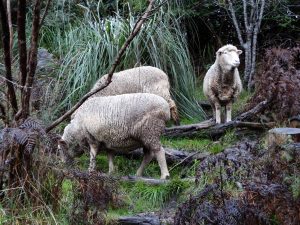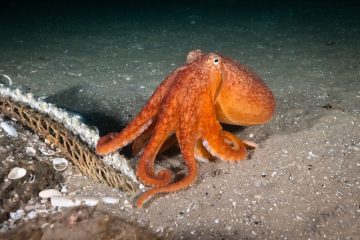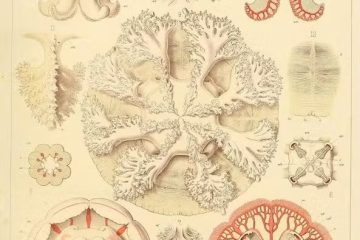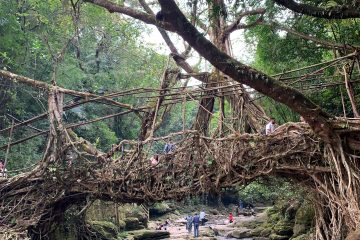Shelter, Culture, and the Good Waves to Catch

Two days ago I found myself on the road out west, into farming country. I was transporting six cats to their new home. It was pouring rain; at times it felt like we were surfing. Our wide-wheeled Gunnel, so named for her Swedish origins, was holding onto the road with impeccable efficiency, while Leonard Cohen’s bird on the wire was trying to set herself free, ever so softly in the background. Worlds within worlds, a friend commented upon hearing the story. It wasn’t birds that were on my mind as I drove past paddock after paddock, sparsely populated with soaking wet sheep, cows, and the occasional horse. No shelter on the horizon, barely a tree still standing, a lot of wire but no hope for freedom.
The following day the rain would dry up and the same individuals would be standing in the same paddocks under the scorching hot sun.
Had I not spent the past eleven years in close proximity to my rescued sheep—an incredible experience that culminated in the recently released book Letters to My Sheep—my perception of those paddocks and the individuals and communities on them would likely have been different. To begin with, I wouldn’t have known that they didn’t have access to shelter, I would have assumed, as most humans do, that they choose to stay out in the rain (or sun or snow or hail or whatever is sent by the heavens). They don’t. Like humans, sheep (and cows and others) too prefer a protective roof over their head, or a canopy, depending on the severity of the conditions. Another thing I would never have known, or imagined, without my sheep family, is how complex sheep are, both as individuals and as communities.
As I wrote at the beginning of the Letters, sheep (and other animals) are completely comparable to humans in everything that matters: they have the capacity to experience pain and joy, they love, they grieve, they play, they observe social norms, they help others, they cheat, they think, they believe, they evaluate things, they need the freedom to make decisions about their lives and those of their children, they solve problems, they create them, they can come up with ingenious solutions, they can also sink into despair. We see this very clearly if we live with them and spend time with them: subtle and less subtle details that are easily missed during fleeting encounters.
Sheep, and other animals, also have culture. Culture, as it turns out, is not merely a cherry on the cake of human life, nor is it an exclusively human attribute. Culture is a widespread phenomenon across animal species, and it is critical for animals’ survival and wellbeing. So much so that animal cultures—learnt behaviors and traditions transferred vertically across generations or spread horizontally among peers in a community—are being progressively incorporated into conservation programs. Culture is also referred to as a ‘second inheritance system’ (the inheritance of learnt behaviors) that meaningfully complements the primary inheritance system, i.e. the inheritance of genes, governing innate behaviors.
There’s a lot of social learning and culturing going on in sheep societies. Scientists have studied sheep (bighorn sheep) and discovered that their migration propensity is culturally dependent. If a population is translocated to a novel territory, it takes several generations of observation and information transmission for this population to gain enough knowledge of the plants distribution and growth cycles in this new territory to resume migrating again. Clearly, having the flexibility to migrate can be a life-saver. Domestic sheep also have culture. At the recent Animal Cultures conference at the University of Sydney, I presented a paper, co-written by Sharon and Paul Mclay who run Ostara, a sheep sanctuary in Tasmania, which featured glimpses of culture formation from our sheep communities.
“How could we do this to you? How could we turn you into mere units of production: senseless, soulless, biological machines, virtually without protection?” I couldn’t get my head around it as I was driving past the captive communities in those paddocks.
Another thing that struck me was the vastness of the land. There is so much land out there that could be “re-wilded,” or more accurately, re-cultured by multispecies communities. I hadn’t been in the countryside in a while, and one forgets not only how cruel but also how wasteful animal agriculture is. “If we shift away from eating meat and dairy and move towards a plant-based diet,” Sir David Attenborough recently reminded us, “we could still produce enough food to feed us, but using a quarter of the land. This could free up the land the size of the US, China, the European Union and Australia combined. Space that could then be given back to nature.”
I drove back perhaps faster than it was safe to. I needed to get back to my sheep. I needed to get back to the Mountains. We live in a bubble here, we often forget how much suffering there is in the world, we have to. Bubbles are not necessarily bad, they help us imagine a better world and with such image in place the doing is easier.
There are many exemplary activities happening everywhere in the world. In our local community, for example, the Planetary Health Initiative, a broad-ranging program, run by our progressive Council, stands out. I wondered whether there would be space within the Initiative for plant-based cooking activities. It amazes me how many people can’t cook, leaving them at the mercy of tins, commercially prepared meals and the like, and associated greater financial and health vulnerability. Before I got around to asking, the Senior Lead of the Initiative, the formidable Lis Bastian, contacted me wondering if I’d be willing to join them and put my passion for plant-based cooking to some good use. We’re starting in February.
Forums like Counterpoint—the host of this blog—created by Kocku and Whitney and sustained by a global community of scholars, artists, activists, and others, also offer an invaluable framework for the exchange of ideas and knowledge-to-action interventions with meaningful impacts on global and local trajectories.
When Michael Singer began his Surrender experiment his reasoning was simple: the Earth and the rest of the universe have been around for a long time, he’s only been here for a few decades, why would he think that he could know better? He began to surrender and say yes to everything that came his way. The radicality of his approach may not be for everyone, and the idea itself is not uncomplicated, but I think it would be a mistake to dismiss it in its entirety. The planet, for example, clearly knows what she needs and she’s calling us to surrender to her plea.
It’s easy to get attached to pain, to internalize the feeling of helplessness, blame others for the misfortunes in one’s internal and external worlds, find like-minded people to share the sentiment of impotence with, and watch the misery compound like a high-interest debt. Fortunately, the opposite also compounds—those pro-active, solution-oriented activities—producing a ripple effect. It’s those waves that we want to catch and ride on. The direction is clear, everything else is a joint venture.
#
Teya Brooks Pribac, PhD, is a scholar and multidisciplinary artist, living in the Australian Blue Mountains with sheep and other animals. She’s currently a research affiliate at the University of Sydney. Her latest publications include the Nautilus award winning monograph Enter the Animal (2021), a recipe collection Not Just Another Vegan Cookbook (2022), and a memoir Letters to My Sheep (2023).
Counterpoint blogs may be reprinted with the following acknowledgement: “This article was published by Counterpoint Navigating Knowledge on 23 January 2024.” The views and opinions expressed on this website, in its publications, and in comments made in response to the site and publications are those of the author(s) and do not necessarily reflect the views and opinions of Counterpoint: Navigating Knowledge, its founders, its staff, or any agent or institution affiliated with it, nor those of the institution(s) with which the author is affiliated. Counterpoint exists to promote vigorous debate within and across knowledge systems and therefore publishes a wide variety of views and opinions in the interests of open conversation and dialogue.
Photo credit: © Teya Brooks Pribac, 2024



